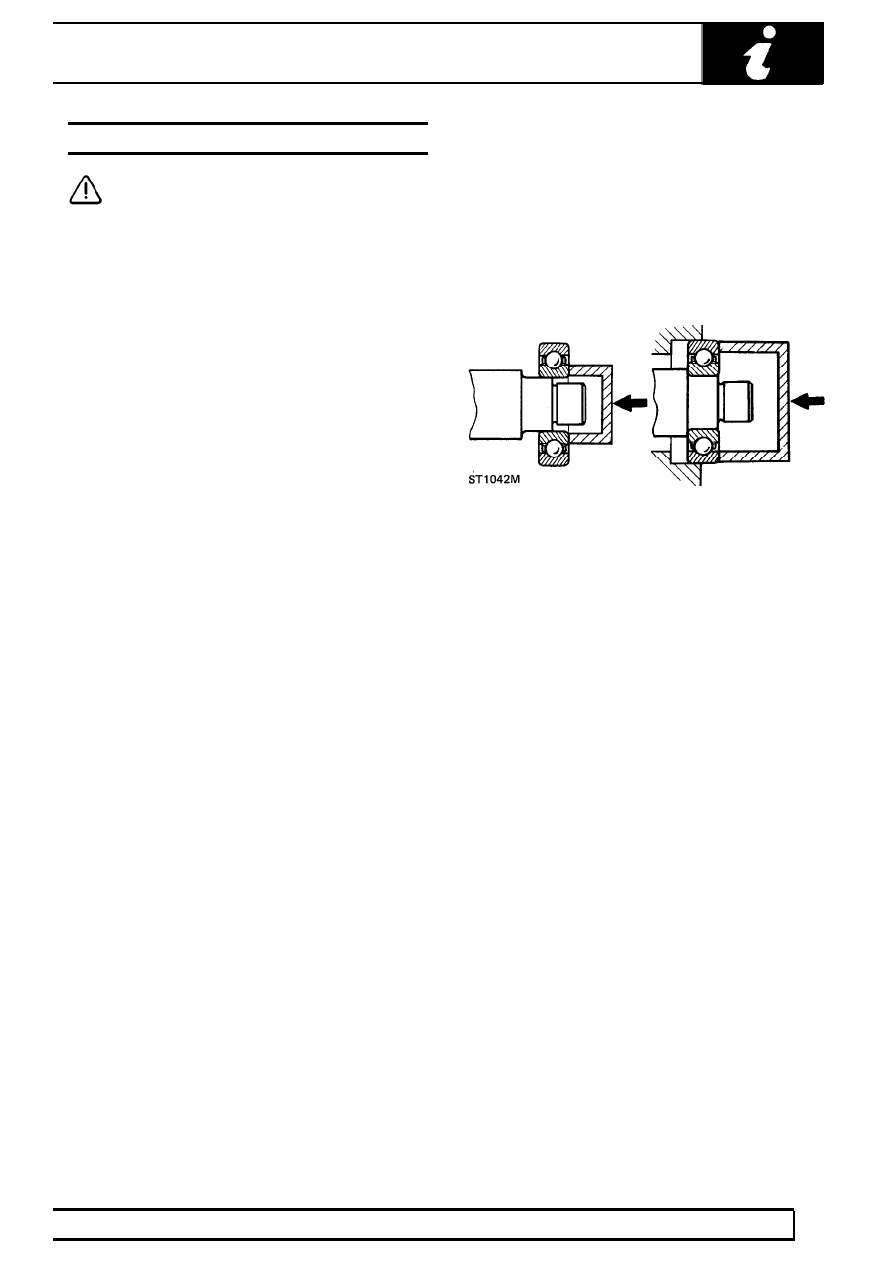Defender 90 NAS. Manual - part 8

GENERAL FITTING REMINDERS
3
INFORMATION
BALL AND ROLLER BEARINGS
CAUTION: Never refit a ball or roller
bearing without first ensuring that it is in a
fully serviceable condition.
1. Remove all traces of lubricant from bearing
under inspection by washing in a suitable
degreaser; maintain absolute cleanliness
throughout operations.
2. Inspect visually for markings of any form on
rolling elements, raceways, outer surface of
outer rings or inner surface of inner rings. Reject
any bearings found to be marked, since any
marking in these areas indicates onset of wear.
3. Holding inner race between finger and thumb of
one hand, spin outer race and check that it
revolves absolutely smoothly. Repeat, holding
outer race and spinning inner race.
4. Rotate outer ring gently with a reciprocating
motion, while holding inner ring; feel for any
check or obstruction to rotation, and reject
bearing if action is not perfectly smooth.
5. Lubricate bearing generously with lubricant
appropriate to installation.
6. Inspect shaft and bearing housing for
discoloration or other marking suggesting that
movement has taken place between bearing and
seatings. (This is particularly to be expected if
related markings were found in operation 2).
7. Ensure that shaft and housing are clean and free
from burrs before fitting bearing.
8. If one bearing assembly of a pair shows an
imperfection it is generally advisable to replace
both with new bearings; an exception could be
made if the faulty bearing had covered a low
mileage, and it could be established that
damage was confined to it only.
9. When fitting bearing to shaft, apply force only to
inner ring of bearing, and only to outer ring when
fitting into housing.
10. In the case of grease lubricated bearings (e.g.
hub bearings) fill space between bearing and
outer seal with recommended grade of grease
before fitting seal.
11. Always mark components of separable bearings
(e.g. taper roller bearings) in dismantling, to
ensure correct reassembly. Never fit new rollers
in a used outer ring, always fit a complete new
bearing assembly.